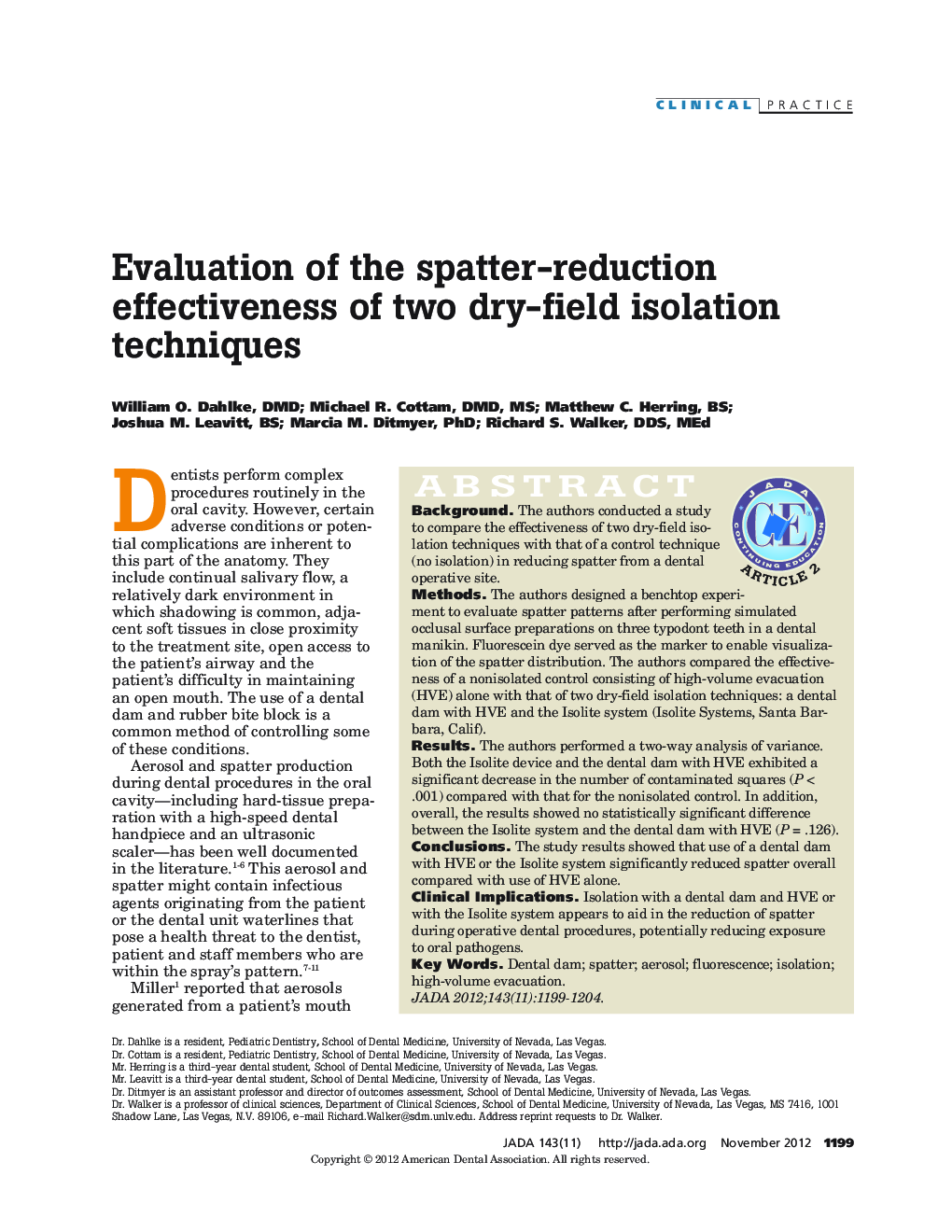| Article ID | Journal | Published Year | Pages | File Type |
|---|---|---|---|---|
| 3137841 | The Journal of the American Dental Association | 2012 | 6 Pages |
ABSTRACTBackgroundThe authors conducted a study to compare the effectiveness of two dry-field isolation techniques with that of a control technique (no isolation) in reducing spatter from a dental operative site.MethodsThe authors designed a benchtop experiment to evaluate spatter patterns after performing simulated occlusal surface preparations on three typodont teeth in a dental manikin. Fluorescein dye served as the marker to enable visualization of the spatter distribution. The authors compared the effectiveness of a nonisolated control consisting of high-volume evacuation (HVE) alone with that of two dry-field isolation techniques: a dental dam with HVE and the Isolite system (Isolite Systems, Santa Barbara, Calif).ResultsThe authors performed a two-way analysis of variance. Both the Isolite device and the dental dam with HVE exhibited a significant decrease in the number of contaminated squares (P < .001) compared with that for the nonisolated control. In addition, overall, the results showed no statistically significant difference between the Isolite system and the dental dam with HVE (P = .126).ConclusionsThe study results showed that use of a dental dam with HVE or the Isolite system significantly reduced spatter overall compared with use of HVE alone.Clinical ImplicationsIsolation with a dental dam and HVE or with the Isolite system appears to aid in the reduction of spatter during operative dental procedures, potentially reducing exposure to oral pathogens.
